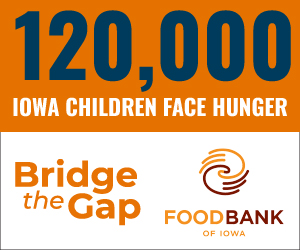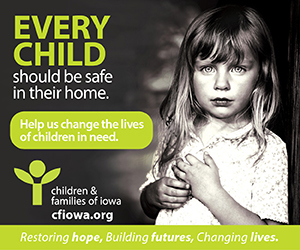The Elbert Files: Iowa’s school problem

“Never waste a good crisis.”
It’s an old saying but appropriate as we prepare for a roller coaster school year.
The idea behind the saying is that challenging times force us to solve difficult problems with nontraditional solutions. World War II provides many examples, including inventions of everything from computers and atomic energy to ballpoint pens and super glue.
The coronavirus pandemic can also be a catalyst.
Particularly relevant is the back-to-school question.
I’m not sure why, but state officials have taken a hard line and laid out a set of rules that many parents and teachers view as unnecessarily confining, not to mention dangerous.
According to the Des Moines Register, the rules are based on a fuzzy piece of legislation that passed with virtually no discussion or public input in June after lawmakers reconvened to complete budgeting and other unfinished work following a pandemic shutdown in March.
The intent of the new law was to give school districts flexibility on when and how they would reopen this fall, leaving open the possibility that pandemic concerns might cause some schools to focus on online instruction as opposed to traditional in-person contact between teachers and students.
But Gov. Kim Reynolds and the Iowa Department of Education put their own spin on the legislation.
The department, according to the Register, interpreted the law as meaning that at least 50% of core instruction must be in person. They even turned down a request from a year-round school in Urbandale to continue operating online, as it had been doing since schools shut down last spring.
Reynolds added her own unique interpretation, requiring 50% in-person teaching unless more than 15% of residents in a county test positive for COVID-19. She added that even 15% positive tests might not be enough to trigger a majority of online-learning when other factors exist; for example, a meatpacking plant with lots of coronavirus cases.
At this point, I should note that Reynolds appears to stand alone in setting a 15% standard for positive cases. No one else – not medical authorities, not teachers, not parents – thinks that’s a good measure. Many say triggers of 5% or 10% are more than enough.
After announcing the standards, the governor doubled down, saying that schools and administrators who do not comply “will be in violation of the law.”
School districts that do not comply, she said, will not receive credit for online instruction and school administrators could have their state licenses suspended.
That may or may not be a hollow threat. But right now, it looks like it’s enough to send some school districts into a court fight that will eat up more time and money for everyone involved.
If courts uphold Reynolds’ rules, it will be devastating. Once Iowa starts eliminating credits and administrators, the state’s educational system – long held as one of the best in the nation – will overnight become a pariah with students unable to meet college entrance requirements and once-heralded administrators decertified and blackballed.
A much better solution would be for state officials to step back and let local schools decide what is best.
Some schools, particularly those in rural areas not seriously affected by the pandemic, may opt for in-person instruction, and that’s fine as long as it doesn’t unnecessarily spread the virus.
Other districts with higher pandemic counts should be allowed to continue encouraging teachers to explore and invent new online curriculums. Who knows what they might invent?
The state could even help by using federal pandemic funds to build up hardware and software resources for online learning, which could ultimately boost Iowa’s digital business profile once the pandemic subsides.






